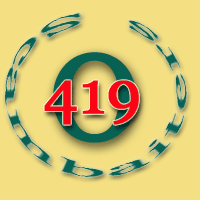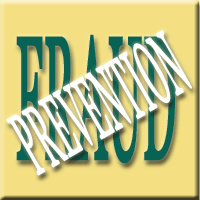
• Home •
Victim´s Story •
Fraud Prevention •
Project GSO •
Hall of Shame •
LINKS •

How Fake Checks Scams Work?
Beware of Fake Checks Scams
Investigators led by the U.S. Postal Inspection Service have arrested 77 people as part of a global fraud crackdown which has since January 2007 intercepted more than $2.1 billion in counterfeit checks bound for the United States.
The eight-month investigation involved schemes in Nigeria, the Netherlands, England and Canada, and has stopped more than half a million fake checks from being mailed to American victims.
“Most Americans don’t realize they are financially liable when they fall for these scams,” said Susan Grant, vice president of the National Consumer's League, an Alliance partner. “There is no legitimate reason anyone would mail you a check or money order and then ask you to wire money in return,” Grant said. “People need to know that checks can take months to clear, even if the money initially looks like it’s in your account. The scammers know that, and most consumers don’t.”
The six most popular fake check scams are:
1. Foreign Business Offers
Scammers pretend to be businesspeople or government officials and promise millions of dollars. But real companies and government agencies don’t offer legitimate business propositions to people they don’t know.
2. Love Losses
The scammer poses as a romantic interest online, and promises to come to the U.S. to be with the victim. Soon after, the online friend asks the victim to cash a check or money order to cover “travel expenses.”
3. Overpayments
Scammers buy merchandise online, and then claim they mailed the wrong amount by mistake. The seller is asked to deposit the “wrong” check anyway, and then return the “excess” amount to the scammer. But the check doesn’t clear, and the victim has sent the scammer his own money.
4. Rental Schemes
Scammers claim to be moving to the area, and put down a rental deposit. Then they tell their landlord they have unexpected expenses, so they ask for some of their deposit back as a favor. They never move in, and the deposit check never clears.
5. Sudden Riches
The scammer claims the victim has won a foreign lottery or sweepstakes. The notice comes by mail, phone, fax or email. Consumers should know that winners of real cash prizes are notified by certified mail.
6. Work-at-Home
The scams promise easy money by “processing” checks. The victim deposits the checks and sends the money to the scammer, minus a small fee. Legitimate companies don’t do business like this.
How to detect fake check scams
Below are several signs which may indicate a bad check. While one sign on its own does not guarantee a check to be counterfeit, the greater the number of signs, the greater the possibility that the check is bad.
- The check lacks perforations.--You Should be able to feel perforations on at least one edge of all legitimate checks except for Government Checks, Checks printed on computer card stock, Counter Checks, and Temporary Checks issued by a Bank or Credit Union.
- The check number is either missing or does not change.
- The check number is low--101 on personal checks or 1001 on business checks. 90% of bad checks are written on accounts less than one year old.
- The type of font used to print the customer's name looks visibly different from the font used to print the address.
- Additions to the check (such as a phone numbers) have been written by hand.
- The customer's address is missing.
- The address of the bank is missing.
- There are stains or discolorations on the check possibly caused by erasures or alterations.
- The numbers printed along the bottoms of the check is shiny.--Real magnetic ink is dull and non glossy in appearance.
- The MICR encoding at the bottom of the check does not match the check number.
- The MICR numbers are missing.
- The MICR coding does not match the bank district and the routing symbol in the upper right-hand corner of the check.
- The name of the payee appears to have been printed by a typewriter.--Most payroll, expenses, and dividend checks are printed via computer.
- The word VOID appears across the check.--This means that the Check was either scanned or color copied.
- Notations appear in the memo section listing "load," "payroll," or "dividends."--Most legitimate companies have separate accounts for these functions, eliminating a need for such notations.
- The check lacks an authorized signature.
FAQs: How to avoid it?
- Q: How can you detect fake check fraud?
- A: All "fake check" scams have the same common pattern: Scammers contact victims online or through the mail and send them checks or money orders. They then ask that some portion of the money be wired back to them. Crooks take advantage of the fact that counterfeits can take weeks – even months – to discover. By then you've sent the money and have to pay it back to your bank. Only cash a check or money order from a person or business you know or trust. The best thing you can do to protect yourself is learn how to avoid these scams.
The old adage still holds true:
"If someone offers you a deal that sounds too good to be true, it probably is".
- Q: How can you tell if a check is counterfeit?
- A: Points to remember:
• No legitimate transaction includes overpayment or requires a refund.
• Typically, phony checks and money orders are so realistic-looking that even bank tellers can be fooled. You can get information from money order and check providers with tips to help tell if their products are real.
• The best way to avoid being victim is to be cautious. If it seems too good to be true, it likely is. If the person approaches you and wants to complete the transaction in a hurried manner or is pressuring you to do so, reconsider the transaction altogether.
- Q: Where to report check fraud?
- A: MAILING ADDRESS:
- National Check Fraud Center
CRIME REPORT
Post Office Box 80171
Charleston, S.C. 29416
www.ckfraud.org/systems.html
- SEND E-MAIL TO: ncfc@ckfraud.org
- ON-LINE CRIME REPORT FORM : https://ssl122.securefastssl.com/ckfraud.org/repform.html
CHECK FRAUD-THE SILENT CRIME
Check fraud affects not only small businesses and major corporations, but individuals as well. More than 500 million checks are forged annually, with losses totaling more than $10 billion (Ernst & Young).
CHECK INFORMATION SYSTEMS
Check Information Systems, located in Charleston, South Carolina, was formed in 1989 by Check Investigative Services as a private company that gathers and maintains information and intelligence on known individuals and suspects who have committed:
• CHECK FRAUD,
• BANK FRAUD,
• FORGERY,
• COUNTERFEIT,
• WHITE COLLAR CRIMES
REPORTING YOUR CRIME:
To whom do you report your crime? You should ALWAYS file a report with your local police department. You may find that your local police department will not want to take a report since your crime may have taken place in another state.
- YOU MUST BE PERSISTENT
JURISDICTION OF YOUR CRIME:
JURISDICTION of the crime is very important. If you used a common carrier in shipping an item and they accept payment in your behalf from your buyer, jurisdiction is established where the payment is exchanged. Also you must report the crime to the police agency where JURISDICTION was established. They are responsible to investigate the crime.
If you have been a victim of CHECK FRAUD, FORGERY, received a COUNTERFEIT CHECK, or been involved in a WHITE COLLAR CRIME, we urge you to contact this office at once. Check Investigative Services may be able to assist you in the recovery of your funds.
OTHER PLACES TO REPORT YOUR CRIME:
• Department of Justice: www.usdoj.gov/
• Department of Treasury: www.irs.ustreas.gov/
• Federal Trade Commission: www.ftc.gov/
• Postal Inspection Service - FOR MAIL FRAUD: postalinspectors.uspis.gov
• Your State Attorney General: www.ckfraud.org/attgen.html
• Internal Revenue Service: www.irs.gov/
• Security Exchange Commission: www.ckfraud.org/sec.html
• Federal Bureau of Investigation: www.fbi.gov/
• Secret Service: www.treas.gov/usss/
• FinCEN (Financial Crimes Enforcement Network): www.fincen.gov/
• Customs Service: www.customs.treas.gov
© by GSO • Contact